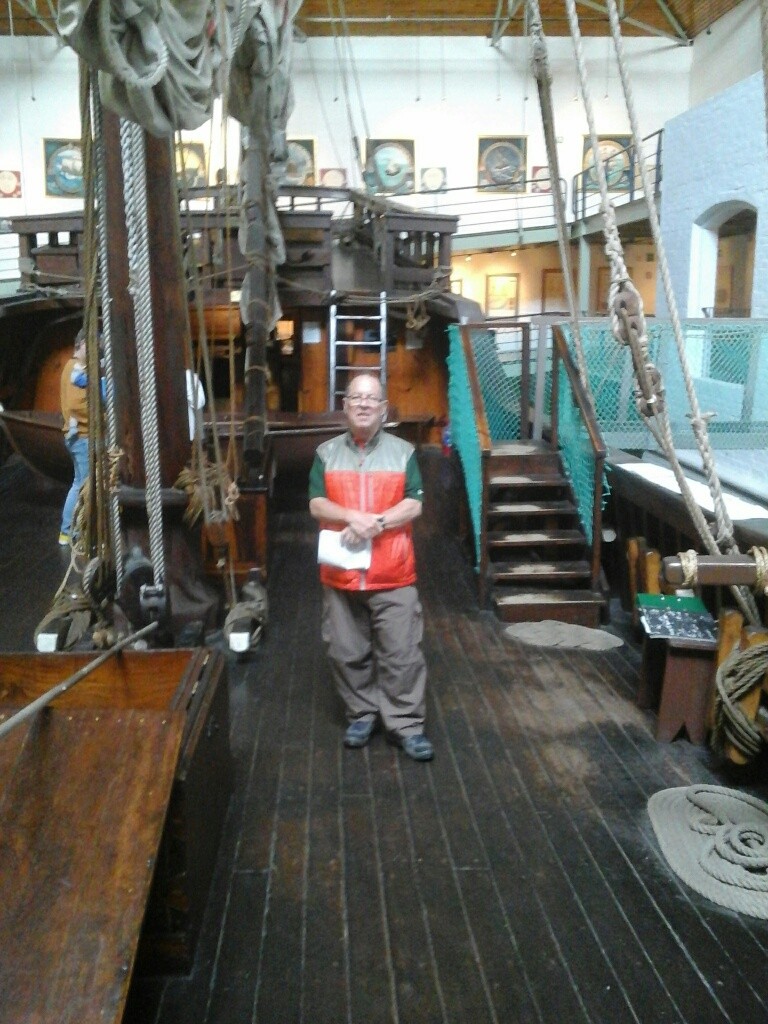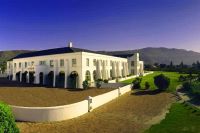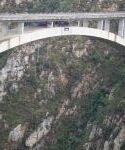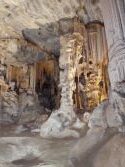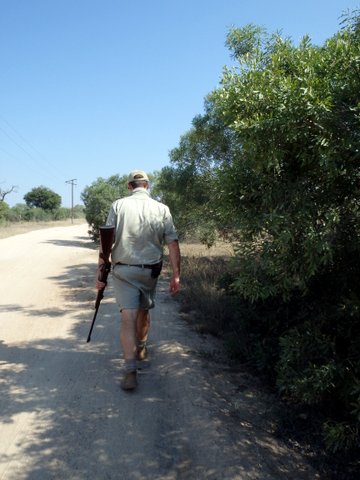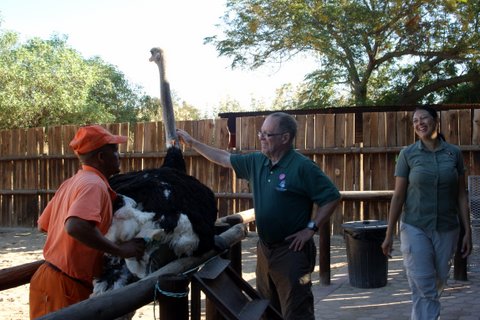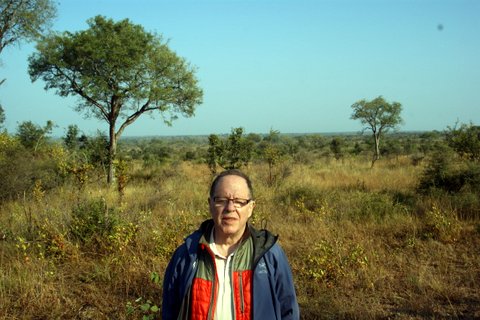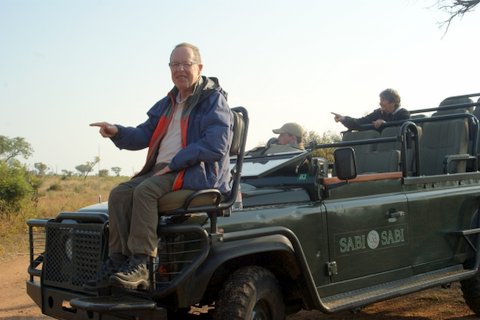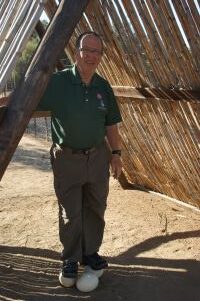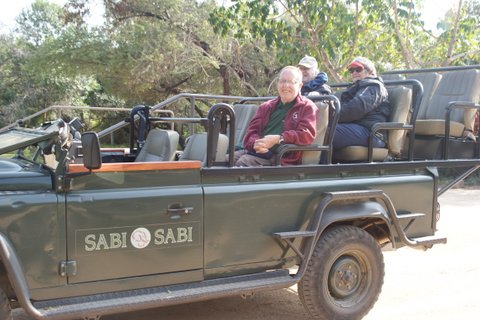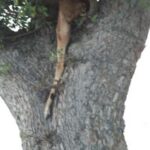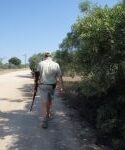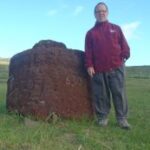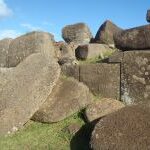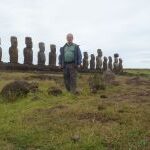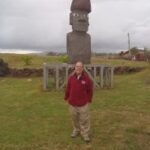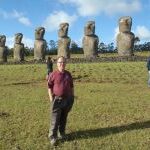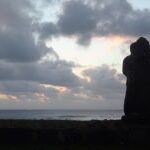I’ve spent the last two days getting to Cape Town and enjoying the area around this city of nearly 5 million people.
The ride from Hermanus here was especially pretty, with the mountains on one side, and the ocean on the other. The highlights?
A botanical garden featuring fynbos. Though it’s late fall here, you might never know it except for the maples, oaks and sycamores, which look like November (and the vineyards, long since harvested). Fynbos is the local plant, including the protea which is the national flower. Some were still in bloom, with large and colorful blossoms.
look like November (and the vineyards, long since harvested). Fynbos is the local plant, including the protea which is the national flower. Some were still in bloom, with large and colorful blossoms.
A colony of penguins. I think I sent a picture with me and some of my little friends. The colony moved here in the early 1980s, apparently having run short of the sardines and other fish that constitute diet farther west (tho there are other colonies of penguins here, and we’ll see another one closer to Cape Town). The shrinking supply of food has shrunk the South African penguin population from 2 million in 1900 to under 70,000 breeding pairs today. It helps that people have stopped gathering penguin eggs (1967 it became illegal), and have begun to protect the existing birds. They now live in government housing (so to speak), with fiberglass boroughs to protect them and the babies from predators and the sun.
penguin population from 2 million in 1900 to under 70,000 breeding pairs today. It helps that people have stopped gathering penguin eggs (1967 it became illegal), and have begun to protect the existing birds. They now live in government housing (so to speak), with fiberglass boroughs to protect them and the babies from predators and the sun.
A local restaurant. My mom would have called the Oyster Inn in Gordon’s Bay (or as the Afrikaners call it, baai) a “dive,” and my guide was a little apologetic but I thought it gave a nice look at local pubs. The yellowtail was fine, and the malva pudding, a South African dessert, certainly satisfied my sweet tooth. And I didn’t mind the blaring rugby match on the TV, nor the fact that smokers were nearby (that’s the local color).
Today’s treat was a drive through the wine country. As I mentioned, the French Huguenots (Protestants) were welcomed here by the Dutch i n the 17th century, and brought viniculture to the colony. Those days are still commemorated in some of the towns (the Huguenot museum was unfortunately closed) in the names of the vineyards (La Provence and Normandie and Marianne were three I remember, but there are hundreds of them in the area). This was about an 8 hour tour featuring 13 samples of wines; interestingly, there is a port equivalent, but that’s a Portuguese trademark, and a sparkling wine that in France would be champagne, etc., but not here. My favorite city that we went through was Stellenbosch, an old Dutch settlement with whitewashed Cape Dutch architecture. We’ll be going back there to visit the University, so I hope I’ll have a chance for a closer look at the architecture, which included a 1770 arsenal.
n the 17th century, and brought viniculture to the colony. Those days are still commemorated in some of the towns (the Huguenot museum was unfortunately closed) in the names of the vineyards (La Provence and Normandie and Marianne were three I remember, but there are hundreds of them in the area). This was about an 8 hour tour featuring 13 samples of wines; interestingly, there is a port equivalent, but that’s a Portuguese trademark, and a sparkling wine that in France would be champagne, etc., but not here. My favorite city that we went through was Stellenbosch, an old Dutch settlement with whitewashed Cape Dutch architecture. We’ll be going back there to visit the University, so I hope I’ll have a chance for a closer look at the architecture, which included a 1770 arsenal.
 Although South Africa is, ironically, the home of SAB, the second largest brewer in the world (owners of Millers), wines are big business too. I read somewhere it’s a 4 billion rand business (divide by 11 for dollars), and you know it’s big business when 1) Richard Branson of Virgin fame recently bought a vineyard and 2) a Chinese investment group did the same. My guide, Krystelle, was excellent in her knowledge and in introducing me to the culture of the Boers. Her family was one of the early settlers. Her expertise was wine. When I came to South Africa with Carolyn, I made sure we had Krystelle as our guide.
Although South Africa is, ironically, the home of SAB, the second largest brewer in the world (owners of Millers), wines are big business too. I read somewhere it’s a 4 billion rand business (divide by 11 for dollars), and you know it’s big business when 1) Richard Branson of Virgin fame recently bought a vineyard and 2) a Chinese investment group did the same. My guide, Krystelle, was excellent in her knowledge and in introducing me to the culture of the Boers. Her family was one of the early settlers. Her expertise was wine. When I came to South Africa with Carolyn, I made sure we had Krystelle as our guide.
We’ll be in Cape till Friday a.m., so I know I’ll have more to say about what seems to be (certainly where we are) a very livable city!
